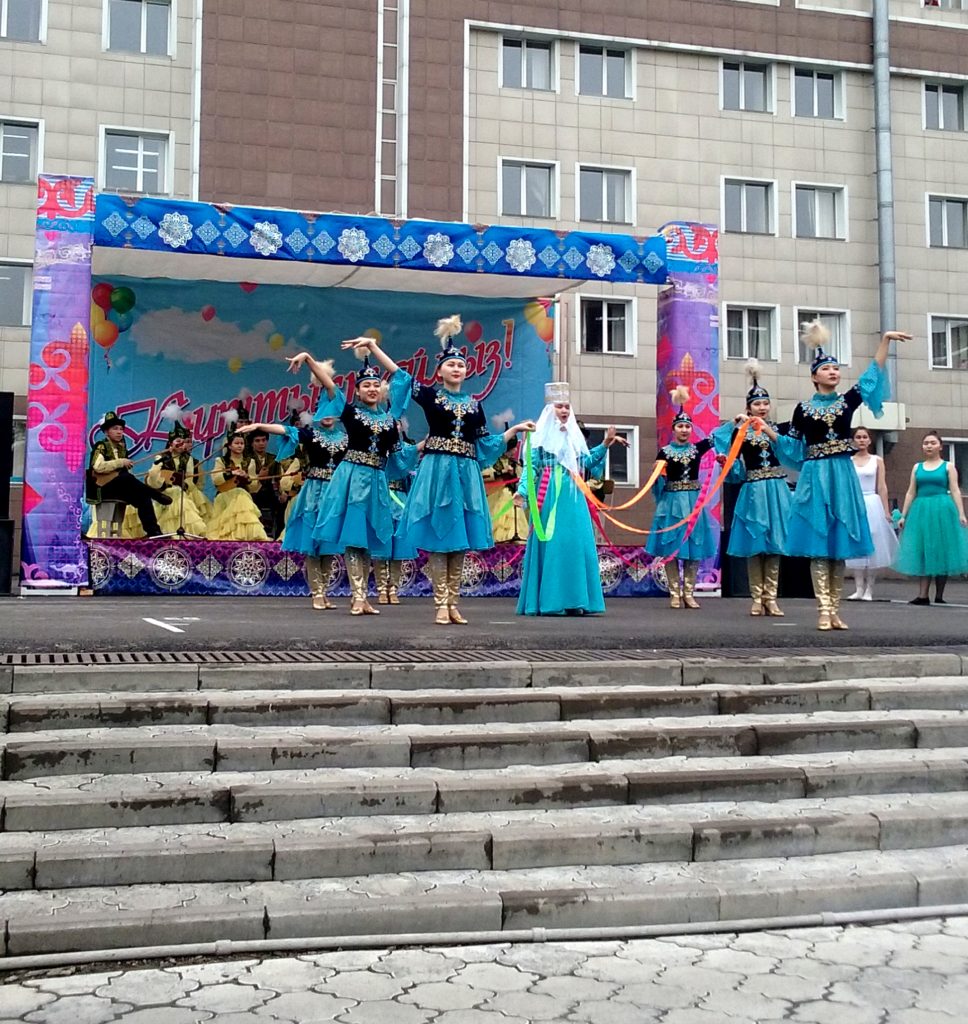Traditional dances from Kazakhstan. The nomadic Khara-Zhorgha
Traditional dances from Kazakhstan. The nomadic Khara-Zhorgha

During the celebration of Nauryz, I attended several times traditional dances of the country, performed by Kazakh women dressed in their long costums and with their pointed hats. Like most of the traditional dances belonging to the Asian continent; the gestures of the hands and arms are graceful and supple; the movements of the body tell a story that is still mysterious to me.
Looking for information about traditional Kazakh dances, I have read that they, of course, come from the nomadic life of thousands years ago. Among the styles practiced there are: imitations of hunting scenes, such as the eagle catching an hare (koyan-berkut) or animal movements, such as the jumping goat (orteke) or the drunken bear (ayu-bi) ; competitive dances (utys bi); satirical dances or accompanied by singing and music; others that imitate the carpets’ weavers (ormek-bi) or shamanic dances (bakhsy).
These dances have various forms depending on the region and are distinguished in different styles; like that for Karaganda, Dzhetysu, West of Kazakhstan, Xindian-Uighur and Mongolian. These forms of dance express the nomadic life of the Kazakhs along with their emotions and courage. Each clan had its teacher who taught this art to new generations, keeping the tradition alive. Flexibility, sinuous shoulder movements, muscular tension and agility are common traits of these ancient forms of dance. Expressiveness and inventiveness were expressed more forcefully in competitive dances.
The dance of the steppe’s peoples: the Khara-Zhorgha
One of the still popular dances nowadays is called Khara-Zhorgha; it contains various artistic elements, combining satirical and warlike, romantic and lively traits; expressed with movements that goes from slow and sinuous gestures to fast and agile. Howewer the origin of the dance is linked to ancient shamanic religious rituals practiced millennia ago by the peoples of the steppe and is traditionally danced during the initiation rite of a child within the community.
The birth of a child allowed the reproduction of cosmogony according to the mythical beliefs of the tribe; all the initiations of the new born rappresent the official entry into the sacred world of the nomads with their culture and social hierarchy. In ancient time, the infant was then placed on the back of the horse as an initiation into the nomadic life and the rhythm of the dance reminds the horse’s gallop; mobile, always directed forward despite obstacles with optimism. The horse was considered a sacred animal belonging to several worlds; the material and the spiritual. The Khara-Zhorga dance also expressed protection for the newcomer and for the guests attending the ceremony.
This dance is known in various regions of the country with different names and is still danced on feast days. A good opportunity to observe it is during the celebration of Nauryz. Or, you can watch the video shown here.

